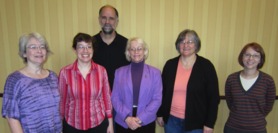All stars originate from clouds of interstellar gas, but the mechanism responsible for formation can vary dramatically depending on the cloud and its environment. For example, if a cloud is massive enough that the gas pressure can no longer support it, gravitational collapse will occur without any external help. In triggered star formation, however, the collapse of a cloud is initiated by external pressure from a nearby star, supernova, or even collision with another cloud. When the external pressure is a shock or ionization front, it pushes away the lower density material faster than the higher density core material. When the external source is bright stars, it can illuminate the rims of the cloud. Energy from nearby stars not only causes bright rimmed clouds (BRC) to be visible at optical wavelengths, but may also provide an impetus for triggered star formation.
We propose to use infrared excess to search for candidate young stellar objects (YSOs) using newly released Widefield Infrared Survey Explorer (WISE) data in three such BRCs, all of which are in regions of known star formation: BRC 27 (with many known young stars), BRC 34 (a less dense star forming region), and BRC 38 (with many known young stars).
The Spitzer Archival data was studied by Johnson et al. (2012; a 2011 NASA IPAC Teacher Archive Research Program [NITARP] team) and Rebull et al. (2012, in prep) for BRC 27 and BRC 34 and by Choudhury et al. (2010) for BRC 38, providing verification for data analysis and results. We will study the larger region around each of these BRCs using WISE data. We will also process and analyze serendipitous Spitzer data found for these three regions. Based upon our analysis, and in combination with existing data in the literature, we propose to look at the properties of previously identified YSOs as well as identify new YSOs.
Caltech, Pasadena, California
Lincoln-Way North High School, (unkn), Illinois
Walter Payton College Prep High School, Chicago, Illinois
Daniel M. Soref Planetarium at the Milwaukee Public Museum, Milwaukee, Wisconsin
New Philadelphia High School, New Philadelphia, Ohio Wake Forest University, Winston-Salem, North Carolina
The regular NITARP 2012 teams submitted research proposals. Several NITARP alumni helped review their proposals.
